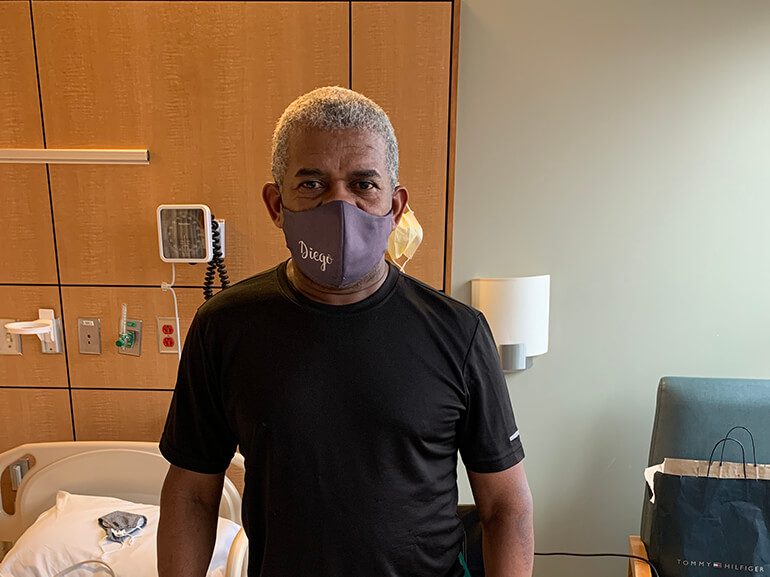Diego's story

Diego Rondon, 53, is a married father of five. Three children are grown and live in the Dominican Republic, where Diego is originally from, and two live at home with him and his wife. Diego was very active, working in a warehouse and often walking up to 25,000 steps a day. That was before a stroke left him unable to walk at all.
It all started one December day when Diego started losing his balance and was unable to stand or walk straight. But as quickly as the symptoms came, they disappeared. Later that night while attempting to scratch his head, Diego found himself unable to lift his arm. He woke up his wife who immediately took him to the hospital. After running multiple tests including a CT scan and MRI, he was diagnosed with a stroke.
After two days in an acute care hospital, Diego transferred to Helen M. Simpson Rehabilitation Hospital to continue his recovery. Upon arrival, he was unable to move his left arm or walk and couldn’t perform daily living activities such as going to the bathroom alone. When asked to set goals, Diego expressed that he wanted to walk out of the hospital on his own at the end of rehabilitation.
Diego worked with physical therapists on transferring from one surface to another, improving balance, increasing strength and walking. He also got a special brace for his left foot, which provided support as he learned to walk again. Initially, Diego used a support harness in therapy sessions to distribute weight until he built up enough strength to walk with a walker. From there, he progressed to walking with a quad cane, followed by single point cane, then walking on different elevated surfaces.
In occupational therapy, Diego worked on regaining abilities to complete self-care and homemaking tasks, transferring from one surface to another and mobility. With ongoing guidance from his therapists, Diego gradually increased his independence in daily living activities. He progressed from needing two people to assist him in completing toilet, bed and shower transfers to only needing supervision. He also worked on improving upper body strength, motor coordination and endurance, which led to him to successfully complete light home management tasks such as cooking and laundry.
In addition to attending his daily therapy sessions, Diego also participated in week-long stroke group, which provided education, activities and interaction with other stroke survivors. He found this useful not only for himself but also helpful for family and friends regarding how to spot signs and symptoms of stroke. “The education I got was so important for me, and for others, to learn about strokes,” said Diego. “I have been able to talk to my family members here and in the Dominican Republic to educate them.”
After two weeks, Diego was ready to return home to his family having achieved his goal of walking out of the hospital. In addition, he was independent for self-care tasks and was also able to go up and down 16 stairs.
Knowing firsthand that many countries don’t provide the same level of care as the U.S., Diego was incredibly grateful for his time at Helen M. Simpson. He also plans to continue outpatient therapy at Penn State Health Rehabilitation Hospital to build on the progress he made, to keep getting stronger.